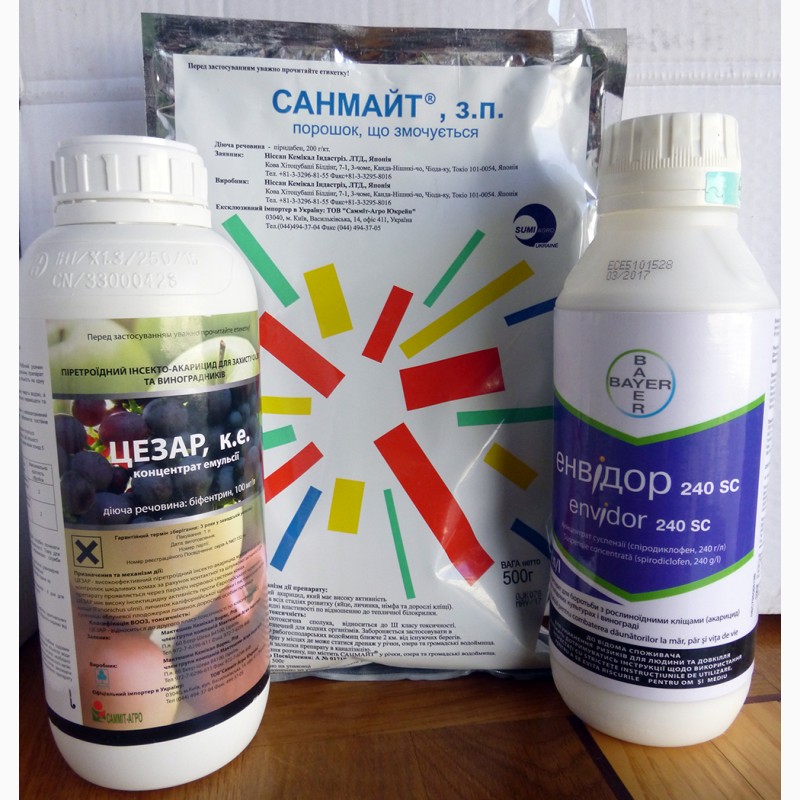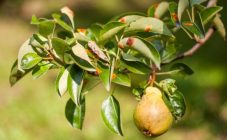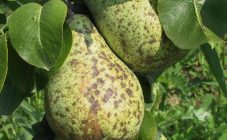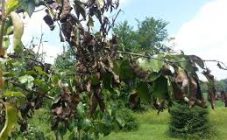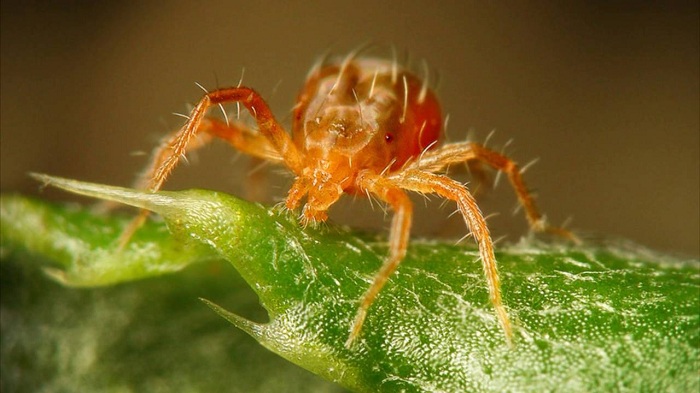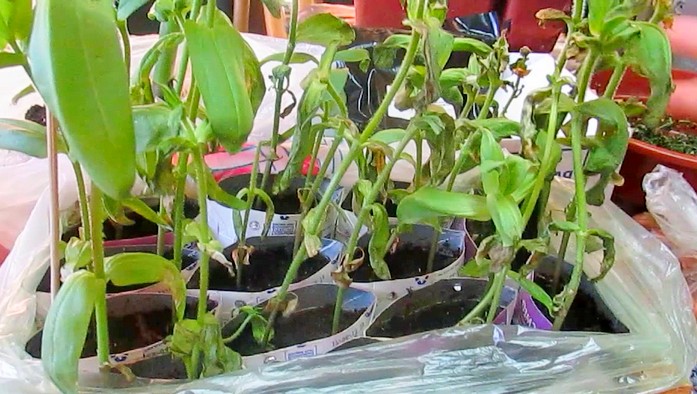Content:
Often a gall mite starts up on the pear. This insect is also called itch. There are all sorts of varieties, but most often you can find plum gall mite and gall spider mite on the pear. The insect belongs to the sucking species. The dimensions of his body are too tiny, reaching only 0.3 mm, so he cannot be seen with the naked eye. Outwardly, the tick resembles a white or pinkish worm with four legs near the head, which helps it move. The pest affects not only pear trees, but also plants such as cotoneaster, hawthorn, quince and apple trees. The tick spreads in the wind, eats the leaves of the pear and other parts of it, which can lead to the complete death of the culture.
As the gall mite develops, the pear leaves dry and fall off. For the winter, the parasite hides in the kidneys, where it lays eggs.
Under favorable conditions, three generations of itching can appear per year. The female can lay up to 15-20 eggs at a time. The insect affects all parts of the plant, this affects the yield of the pear, and sometimes the tree dies altogether.
Gall mite on a pear: control measures
Once settling on a pear, the insect sucks out all the juices from it, which disrupts the water balance, decreases the production of chlorophyll and suffers the photosynthesis of the plant. Itching can destroy the entire pear crop, so it is very important to know how to fight this harmful insect.
The basis of therapeutic measures is the following actions:
- preventing the spread of gall mites to other parts of the pear;
- treatment of an infected tree with drugs;
- preventive treatment of other crops.
It is necessary to take measures to combat the gall mite on the pear immediately after its detection.
The first thing to do is cut off all affected branches and burn them. At the end of the growing season, the earth around the stem of the pear is completely dug up.
In the autumn, the following measures are taken to combat the pear mite:
- It is known that the tick hibernates in the bark of a tree, therefore, with the onset of autumn, the old bark is stripped from the trunk and whitewashed with lime.
- Until the buds on the tree have blossomed, the pear is sprayed with a special solution that destroys parasites. This will prevent the reproduction of gall midges in the spring. Later it will be possible to process the culture again.
In the spring, you will need other ways to destroy the gall mite:
- Treatment of wood with solutions to eliminate itch larvae. This is done during bud opening and bud formation.
- If the processing was not carried out on time, then it can be carried out after the pear has faded.
- But during this period, the female can already lay eggs, so the tree is processed more carefully and with the use of additional means to destroy other possible pests.
If acaricides for some reason did not help, then you will have to fight with stronger drugs, which are based on sulfur and phosphorus substances.
This processing requires three stages:
- during the warm season, when insects leave their shelter;
- after the pear has bloomed (most often in summer);
- when the crop is harvested and before the onset of cold weather.
A complete treatment of the tree from the disease is carried out, including branches, trunk and leaves. Chemical preparations are harmful to humans, therefore, special protective clothing, gloves and a face mask are needed before processing.
Tick control products
Most often, ready-made store preparations are used to combat gall mites. This product can be used to combat other pests. With the arrival of spring, you need to do the following:
- before the buds bloom, the pear is treated with decis, inta-vir;
- when the buds turn pink, medications such as karbofos and isophene will help get rid of the tick;
- after the flowers have fallen off, the treatment is carried out using colloidal sulfur. This is done at a temperature of 20 ° C. The proportions are as follows: for 10 liters of water, 100 g of sulfur.
During the treatment of wood with acaricides, preparations from this group must be constantly changed. This group includes such means as karate, karbaphos, anti-tick, fufanon expert, apollo, demitan, ortus.
Recently, instead of spraying, they have increasingly begun to use injections with chemical preparations directly into the tree itself, namely at the location of gall mites. The medicine penetrates into the channel of sap flow and reaches its goal faster. For an injection, drugs of a secticide or acaricide are used.
How to deal with gall mite on pear leaves with folk remedies
Many summer residents prefer to postpone using "chemistry", preferring safer folk methods of dealing with itching and other types of ticks.
The most popular methods of dealing with the use of such funds:
- Potato-based infusion. To do this, take 1 kg of fresh tops or 500 g of dry. After grinding it is filled with 1 bucket of warm water. Next, the product should be infused for 1 hour, after which 1 tbsp is added to the water. a bed of shabby soap. Within 24 hours after preparing the solution, the tree must be processed in time.
- Dandelion infusion. For 1 kg of raw materials, 3 liters of water are taken. After three days of infusion, a piece of soap is added to it, grated.
- Infusion using calendula... For 100 g of flowers, 1 liter of water is taken. Everything is mixed and brought to a boil. The broth should be infused for 5 days. Add the same amount of water before processing.
For such folk recipes, there are conditions of use:
- Lunch time is not suitable for treating wood with infusions, when the sun's rays fall directly on the crop, otherwise the product will lose its pesticidal focus.
- The best time to spray is evening or cloudy weather.
Foliar dressing should be combined with treatments. For this, the following substances are mixed: 5 g of copper sulfate, 3 g of boric acid, 100 g of carbamide, 3 g of potassium permanganate are added to 10 liters of water. Everything mixes well and is added to the soil. You can also combine the product with pesticides without fear for the condition of the tree. So the gardener will not only protect the pear from pests, but also stimulate its growth.
You should not wait until a gall mite appears on the pear, you should carry out preventive treatment of the tree in advance!

